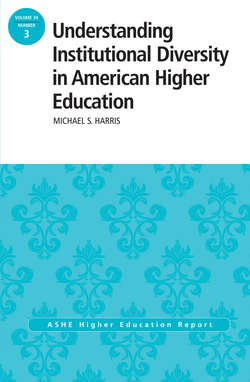Описание книги
Institutional diversity serves as one of the fundamental hallmarks of American higher education. After a long history of support for many institutional types, the past 40 years have seen a decline in institutional variety. Through a discussion of history, theoretical contexts, and causes of homogenization, this monograph examines how higher education policymakers and leaders can strengthen institutional mission and preserve the benefits of institutional diversity. Higher education needs to serve a variety of functions for students, from liberal arts education to vocational training programs. No single institution or institutional type can adequately fulfill all of these roles, and this monograph considers the rewards and challenges of maintaining a healthy, beneficial diversity. It also covers the roles, purposes, trials, and benefits of institutional diversity. It provides practical examples and theoretical perspectives useful in understanding the complexities of higher education systems and the external pressures faced by colleges and universities that challenge institutional mission and threaten institutional diversity and its well-established benefits for students and society. This is the third issue of the 39th volume of the Jossey-Bass series ASHE Higher Education Report. Each monograph is the definitive analysis of a tough higher education issue, based on thorough research of pertinent literature and institutional experiences. Topics are identified by a national survey. Noted practitioners and scholars are then commissioned to write the reports, with experts providing critical reviews of each manuscript before publication.
